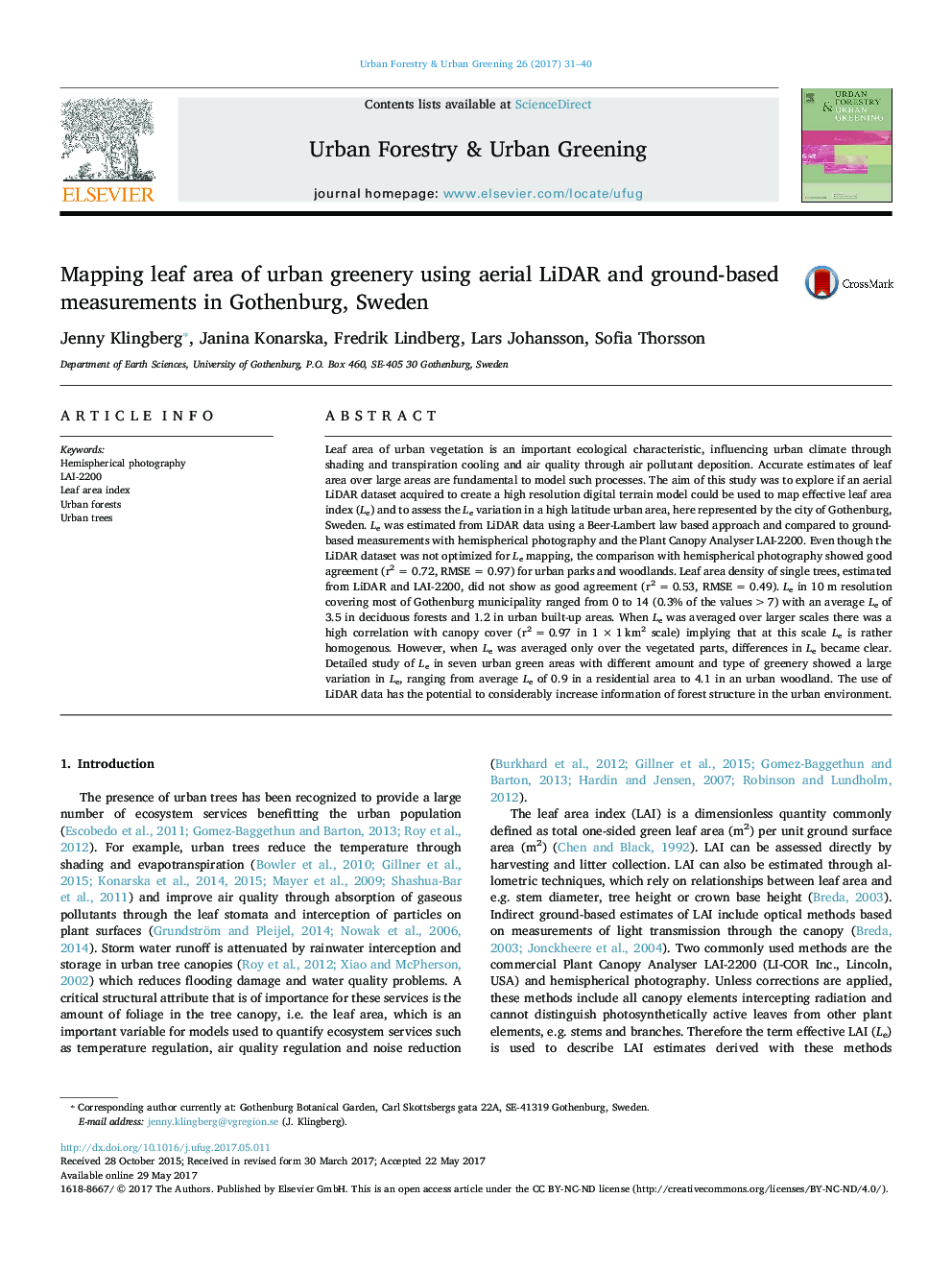| کد مقاله | کد نشریه | سال انتشار | مقاله انگلیسی | نسخه تمام متن |
|---|---|---|---|---|
| 6461816 | 1421864 | 2017 | 10 صفحه PDF | دانلود رایگان |

Leaf area of urban vegetation is an important ecological characteristic, influencing urban climate through shading and transpiration cooling and air quality through air pollutant deposition. Accurate estimates of leaf area over large areas are fundamental to model such processes. The aim of this study was to explore if an aerial LiDAR dataset acquired to create a high resolution digital terrain model could be used to map effective leaf area index (Le) and to assess the Le variation in a high latitude urban area, here represented by the city of Gothenburg, Sweden. Le was estimated from LiDAR data using a Beer-Lambert law based approach and compared to ground-based measurements with hemispherical photography and the Plant Canopy Analyser LAI-2200. Even though the LiDAR dataset was not optimized for Le mapping, the comparison with hemispherical photography showed good agreement (r2 = 0.72, RMSE = 0.97) for urban parks and woodlands. Leaf area density of single trees, estimated from LiDAR and LAI-2200, did not show as good agreement (r2 = 0.53, RMSE = 0.49). Le in 10 m resolution covering most of Gothenburg municipality ranged from 0 to 14 (0.3% of the values >7) with an average Le of 3.5 in deciduous forests and 1.2 in urban built-up areas. When Le was averaged over larger scales there was a high correlation with canopy cover (r2 = 0.97 in 1 Ã 1 km2 scale) implying that at this scale Le is rather homogenous. However, when Le was averaged only over the vegetated parts, differences in Le became clear. Detailed study of Le in seven urban green areas with different amount and type of greenery showed a large variation in Le, ranging from average Le of 0.9 in a residential area to 4.1 in an urban woodland. The use of LiDAR data has the potential to considerably increase information of forest structure in the urban environment.
Journal: Urban Forestry & Urban Greening - Volume 26, August 2017, Pages 31-40